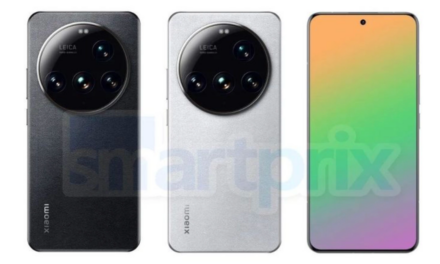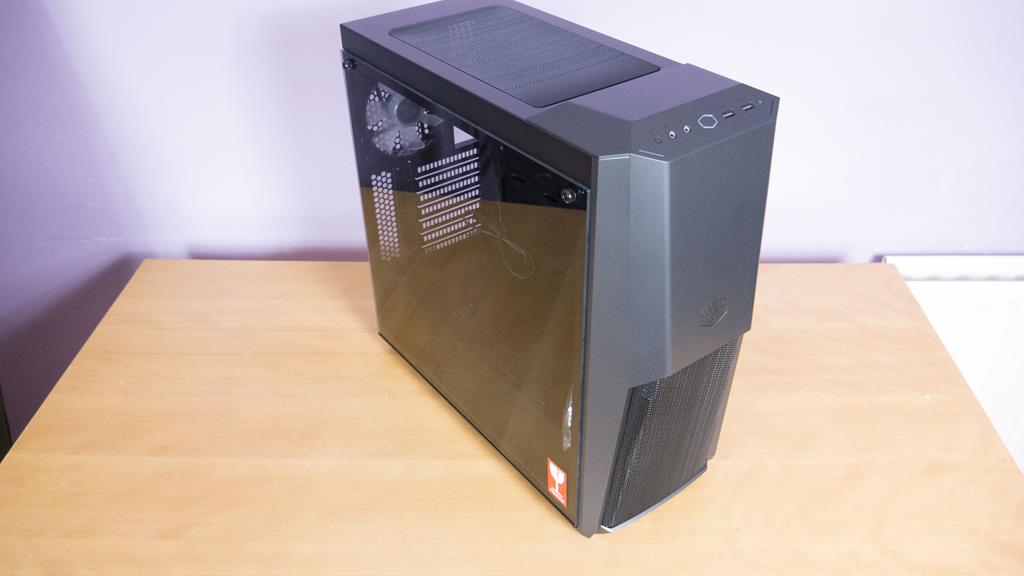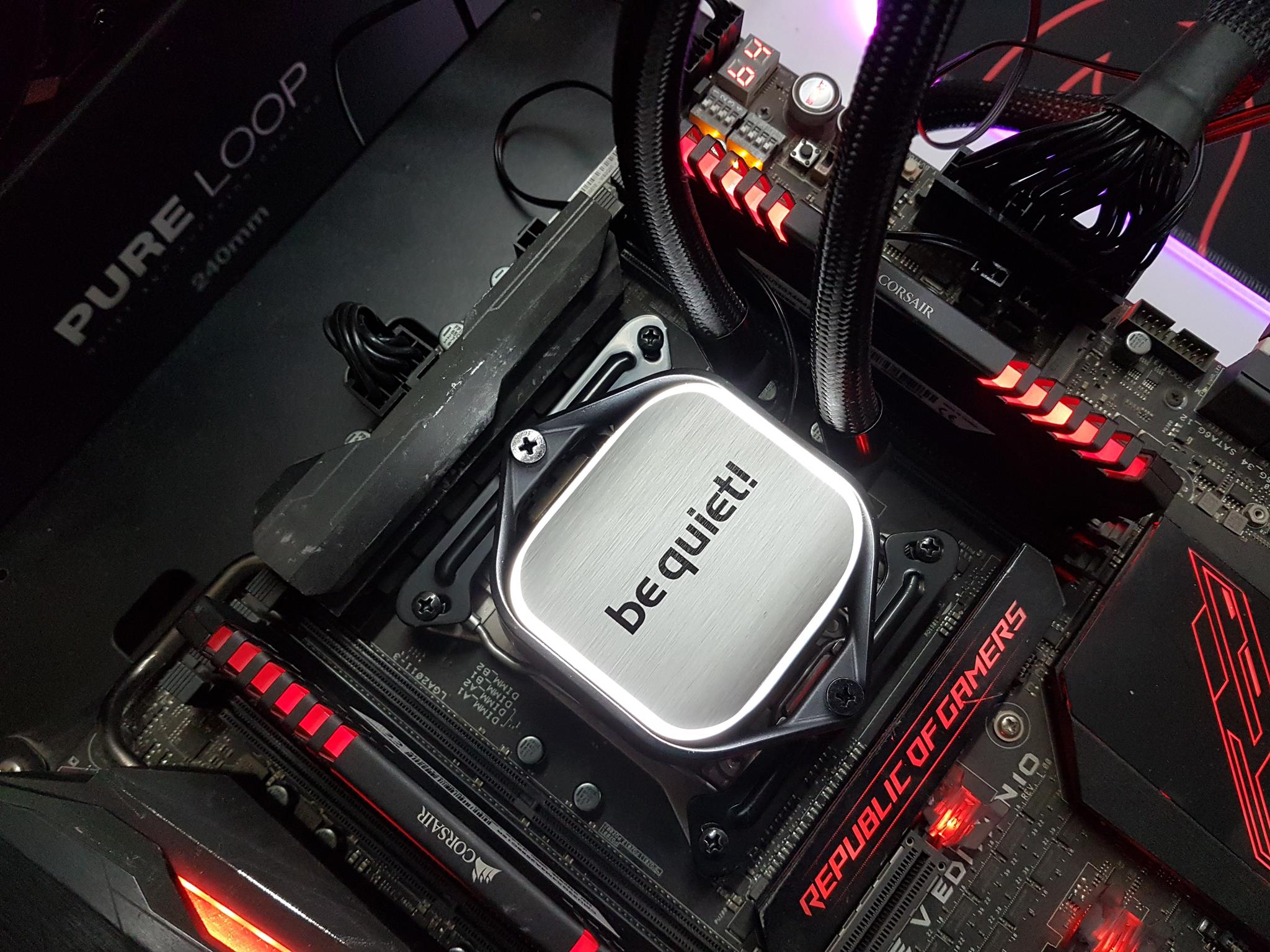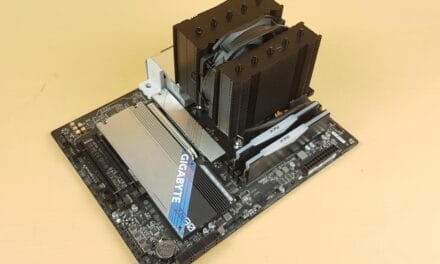
G.Skill Trident Z NEO RGB 32GB 6400MHz CL30 Kit Review. A Good Value DDR5 Kit For AMD Users
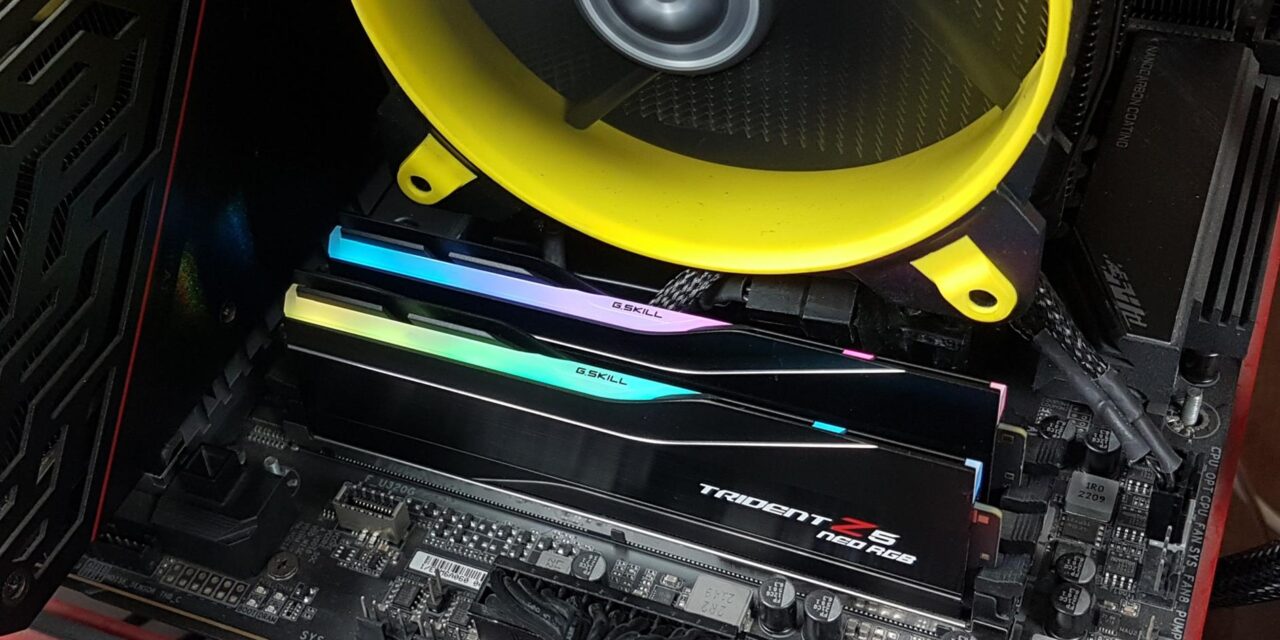
When it comes to high-performance PC memory manufacturing, G.Skill needs no introduction. Their Trident series line has gained more popularity and attraction ever since its launch. I am taking a look at their AMD platform DDR5 kit named Trident Z NEO RGB. It is a 32GB capacity kit operating at 6400MHz at CAS 30. This is impressive though I really am interested in the 6000MHz CAS 26 kit. The operating voltage is 1.40V.
This kit comes with a stylish diffuser over the top for some vivid lighting effects that look that good in person and good thing is that they are not overly done. Their sublime and subtle outlook is my perfect requirement.
This kit is listed at USD 124.99 at the time of this content on AMAZON. The other kit on the test bench is Kingston Fury Renegade Silver operating at 6400MHz, CL32. It is listed at USD 151.36.
Specifications
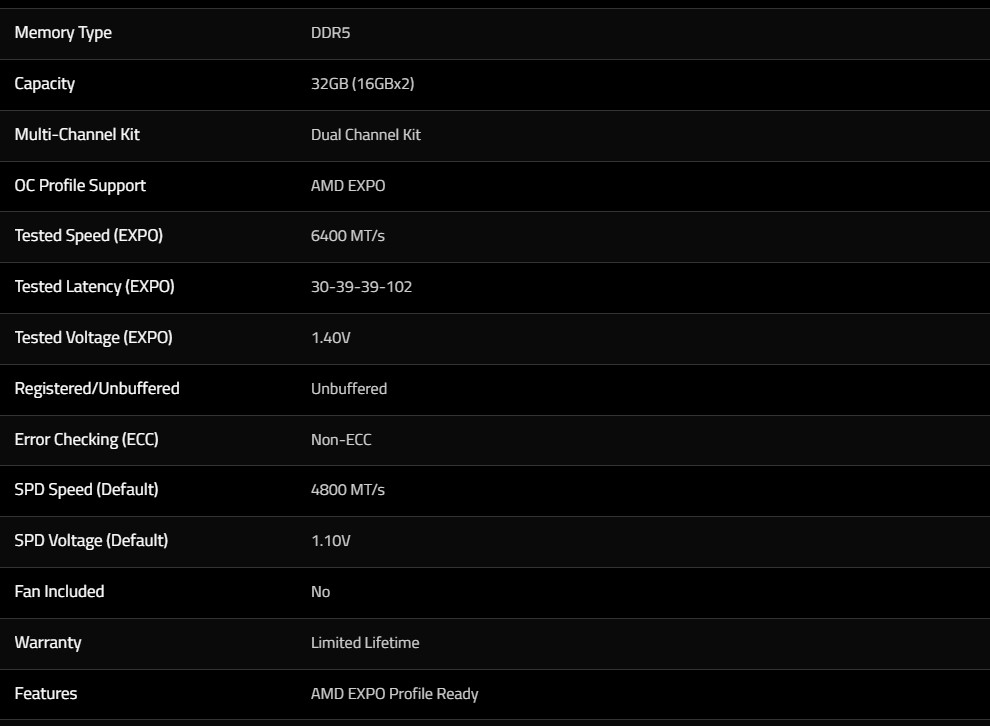
Packaging

The kit comes in a standard design and size packing box unless stated otherwise. Trident Z NEWO RGB is highlighted over the front of the box. You can get a sneak peek at the kit as well.
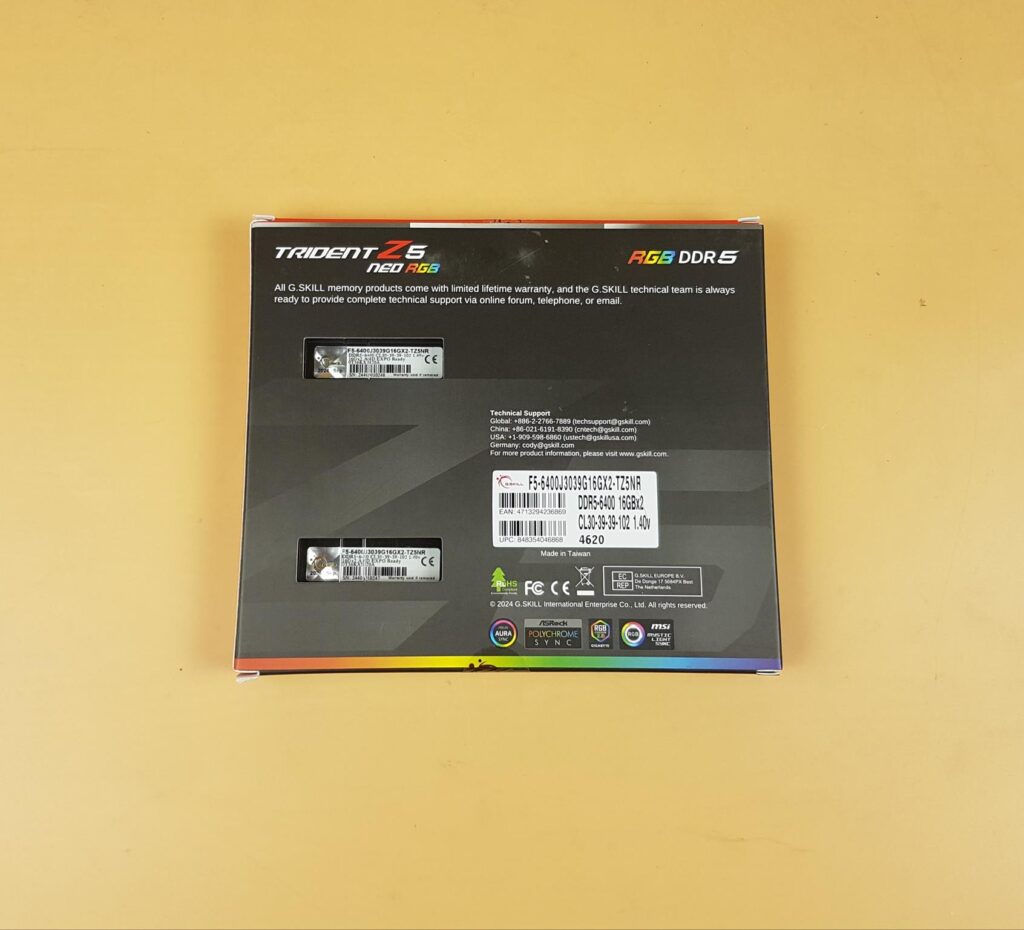
Looking at the backside of the packing box, you can see the data sticker on both kits visible through see through area of the box. The same label is also printed over the box showing the serial number, and part number of the kit.
Box Contents
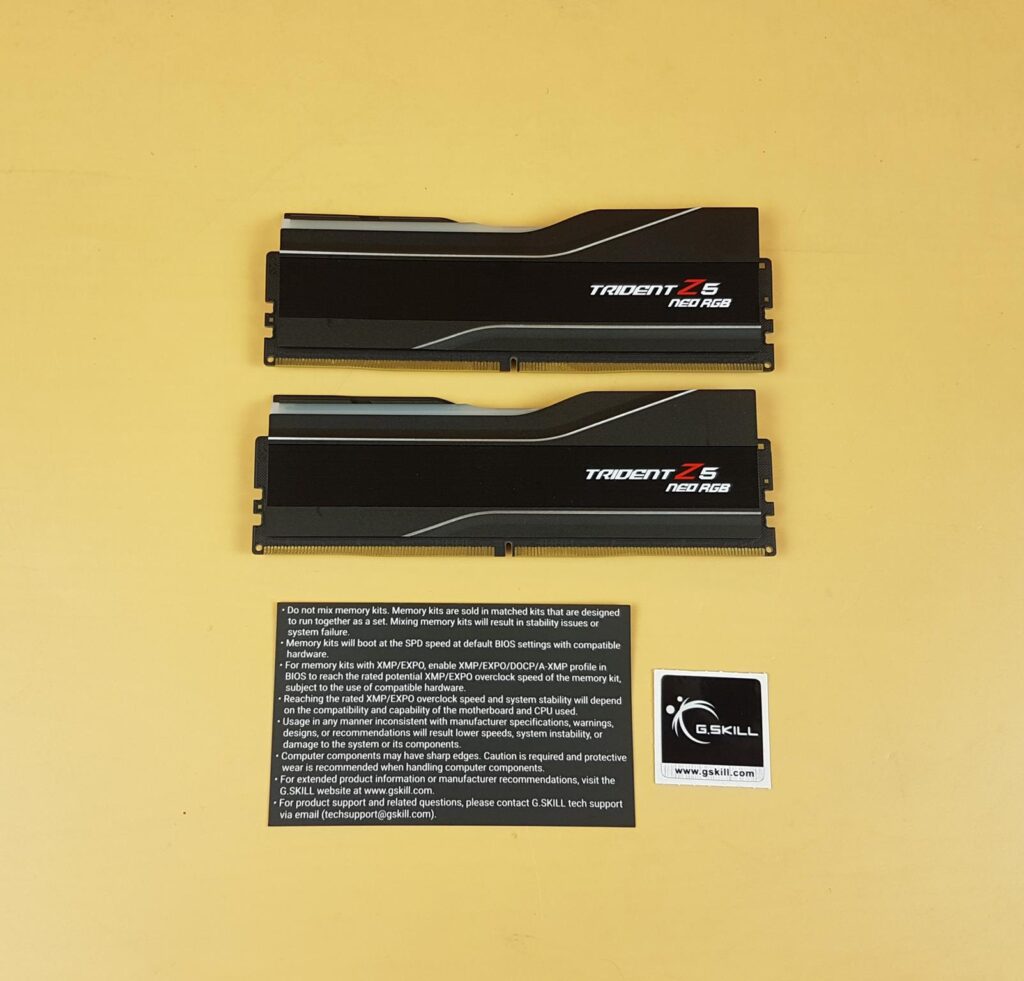
The following are included:
- 1x Kit
- 1x Instruction Sheet
- 1x G.Skill Sticker
Closer Look
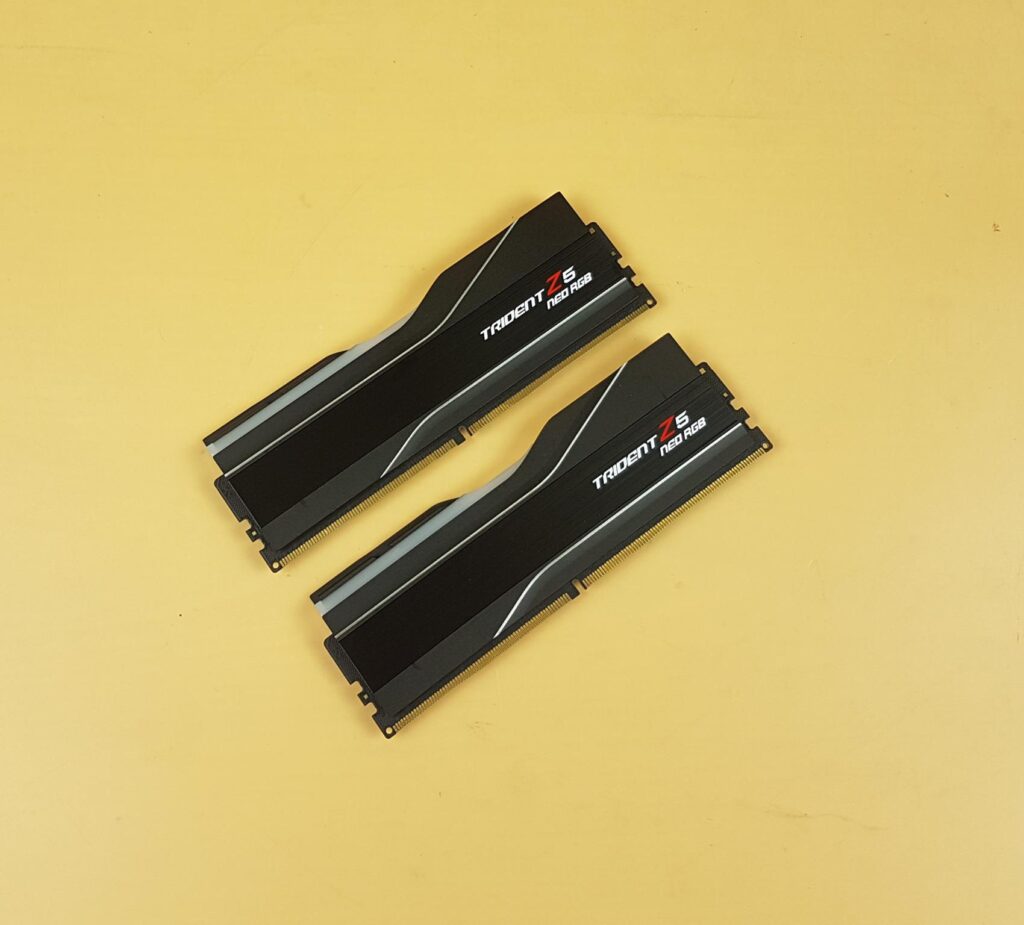
G.Skill carries a dedicated line for the AMD Ryzen platform under the Trident Z NEO name. There is RGB and non-RGB kits are available. In Trident Z NEO RGB the following options are available:
- 5600 MT/s
- 6000 MT/s
- 6400 MT/s
- 7200 MT/s
- 8000 MT/s
Tested Latencies (CL) start from an impressive 26 and go up to 40 depending on the transfer speed rating. The following capacities are available:
- 2x16GB
- 2x32GB
- 2x24GB
- 2x48GB
Certain kits pack AMD EXPO and Intel XMP together as well.

Looking at the front side of a module (16GB), a stylish heat spreader is visible. Trident Z NEO RGB is printed over a label sticker. The heat spreader is made from brushed aluminum material which is inset into a matte black body.
The top section is a marvelous design. It has CNC-milled precise aluminum stripes for elegancy. The diffuser is partially covered with the heat spreader portion. This adds a subtle feel and look to the overall design. The PCB on both sides has a textured pattern design.
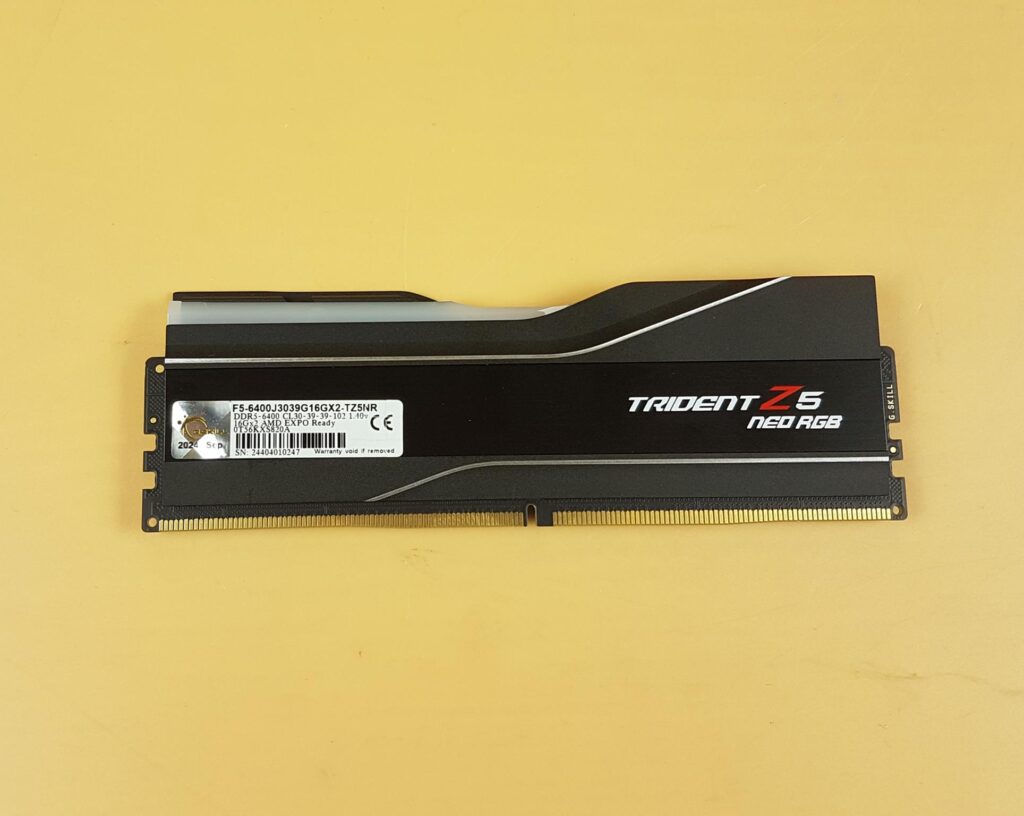
Looking at the backside of the same module, we can see that the overall layout is similar to the front. The main difference is a label pasted here. Removing this sticker would void the warranty. Wondering when will manufacturers move on from the warranty-void mindset!
The part number of this kit is F5-6400J3039G16X2-TZ5NR. In addition, the timing, speed, voltage, and serial number of the kit are also printed. This kit is an unbuffered DIMM with a 288-pin layout. Each module has 1Rx8 meaning a single rank design using 8 modules.
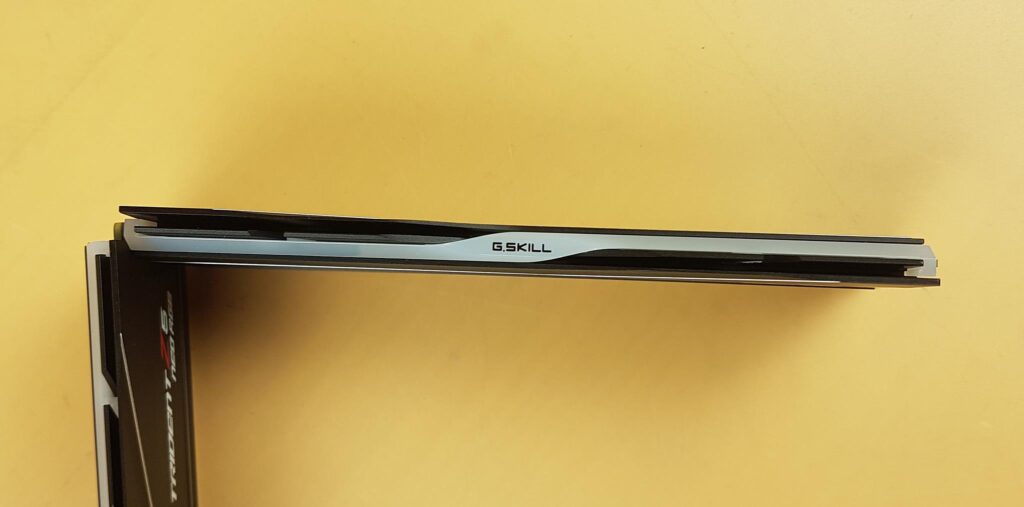
The top view shows that the diffuser runs in an offset on both sides. It is sandwiched between CNC milled highlight stripe. There is a GSkill branding in the center.
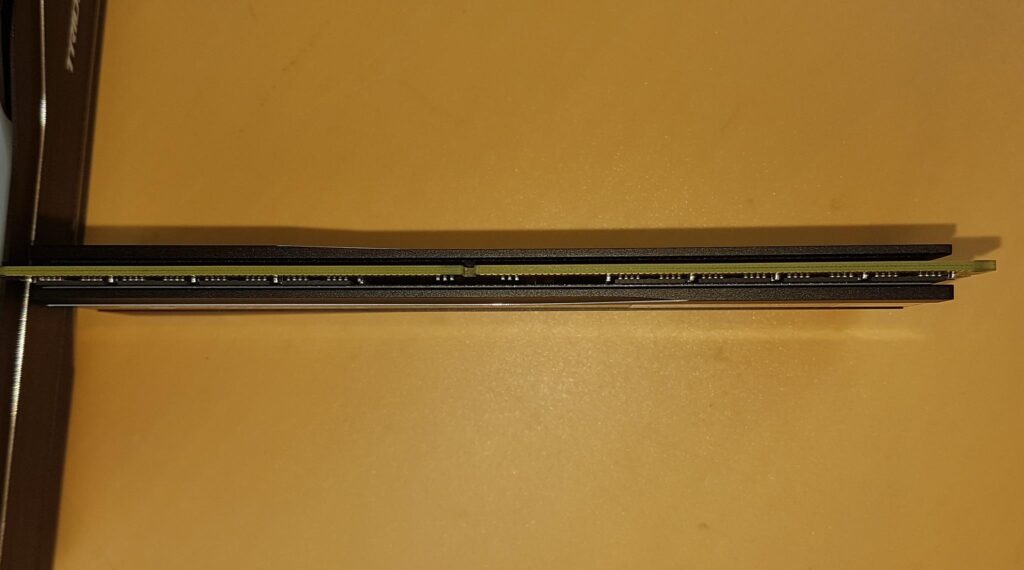
One side of the kit has a pad that runs on the entire length of the module confirming that it is a single-sided module (1R). The PCB seems to have 10 layer design. The other side of the PCB is populated with DRAM chips and circuitry.
The PCB has a total of 8x chips. The PMIC chip is in the center. This gives a 16GB capacity in 1Rx8 using a 2Gx64 bit design. This kit uses Sk Hynix A Die (4.1). Its manufacturing was in the 40th week of 2024. The SPD chip is from Montage Technology group, SPD5118 where as the PMIC is from Richtek Power PMIC5100. According to the software, thermal sensors are not present but HWInfo64 showed the thermals.
RGB Lighting
This kit packs subtle yet stunning visuals. The RGB lighting is compatible with many motherboard manufacturers’ RGB solutions. Alternatively, you can use G.Skill’s own software for that. Here are some pictures:
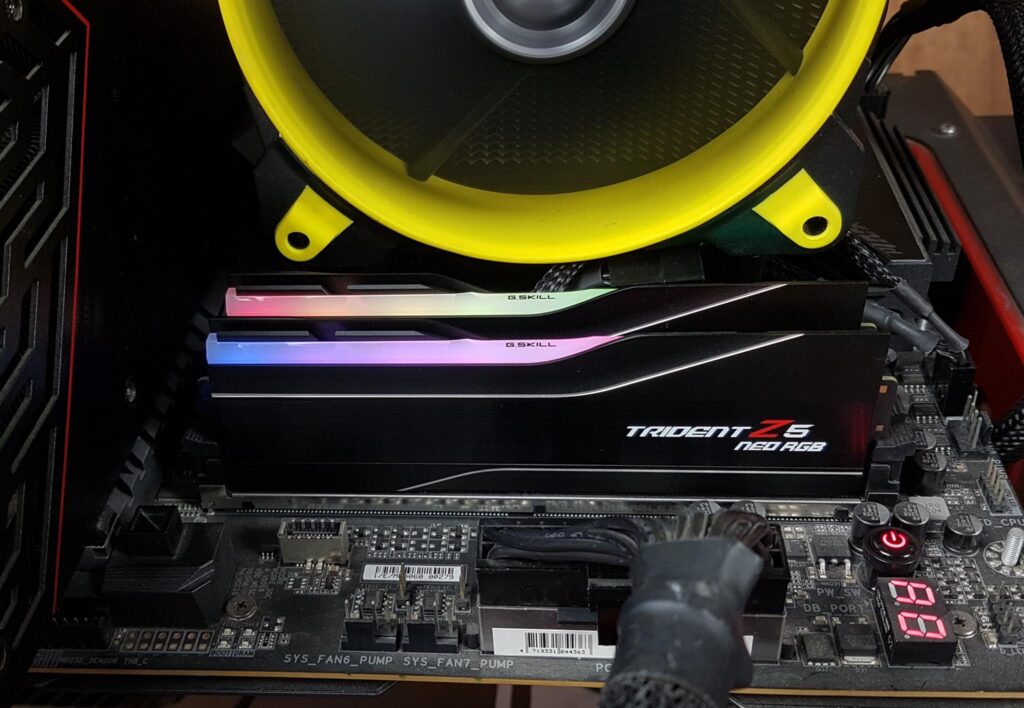
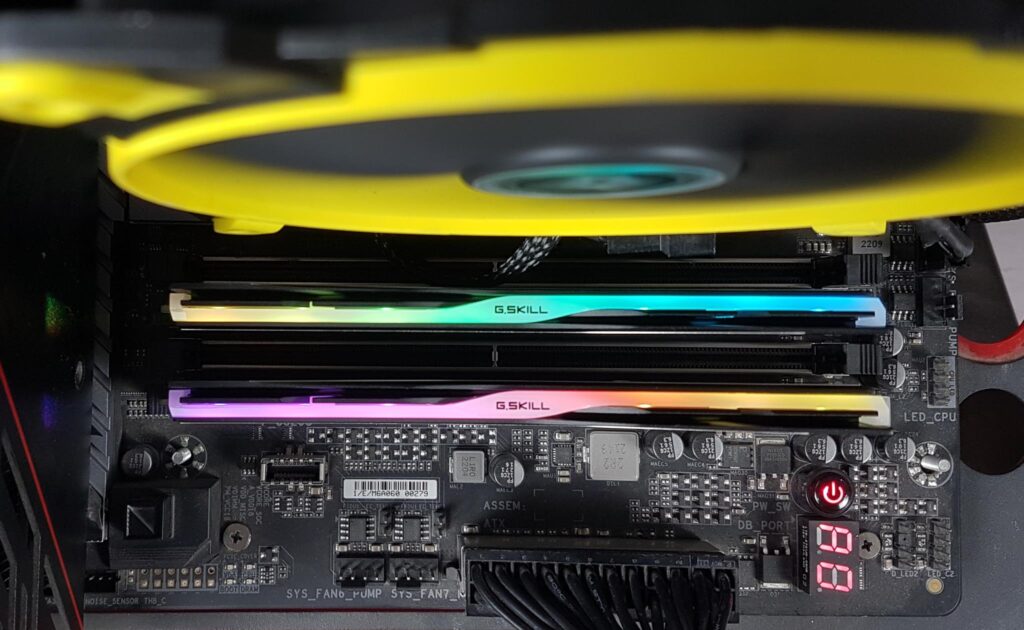
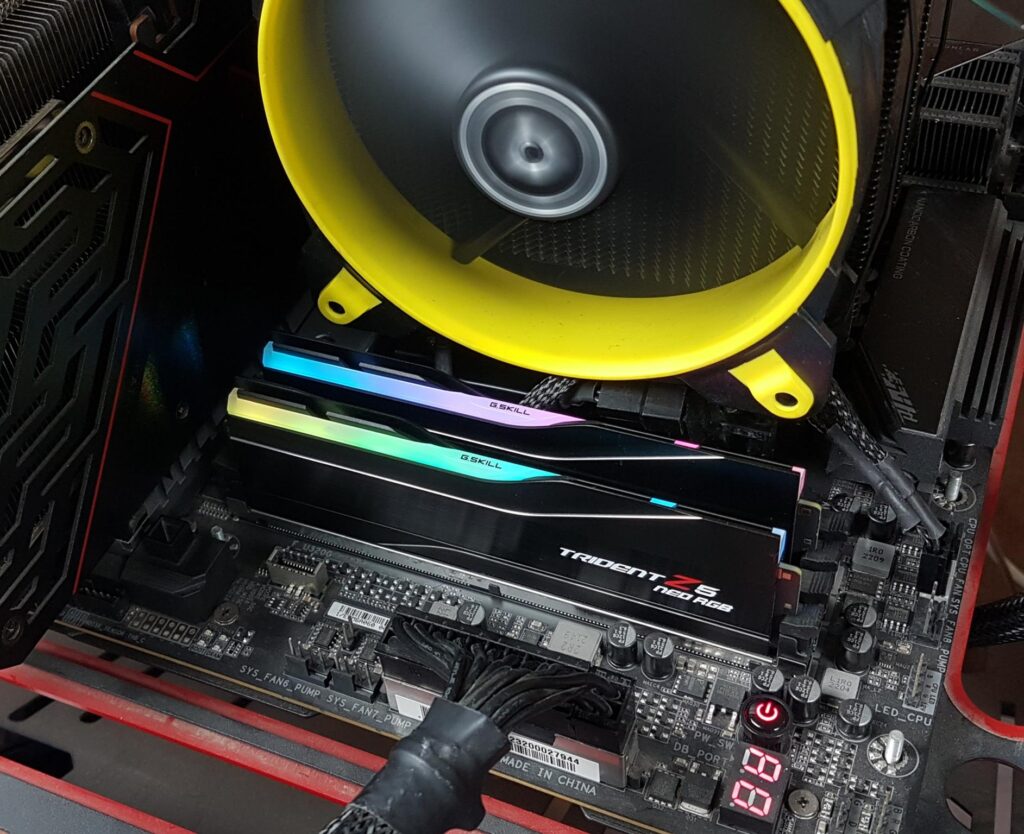
Testing
I have used the below configuration for the testing:
- AMD Ryzen 9 7950X [Advanced PBO]
- ARCTIC Freezer 27 eSport Duo [Performance comparable to the NH-D15]
- GIGABYTE X670E AORUS MASTER
- XPG NVME SSD 1TB [For OS]
- Sabrent Rocket 4 Plus 2TB PCIe 4.0 NVMe SSD
- ASRock Phantom Gaming RX 7600 OC 8G [For Display]
- Be quiet! Straight Power 11 850W Platinum
- Praxis Wetbench
Other kits are:
- Kingston FURY RENEGADE DDR5 32GB 6400MHz CAS32
I have used the below software for the testing:
- AIDA64 Engineer
- SiSoftware Sandra Suite
- Performance Test
- 3DMark Time Spy
- Super Pi

BIOS Run
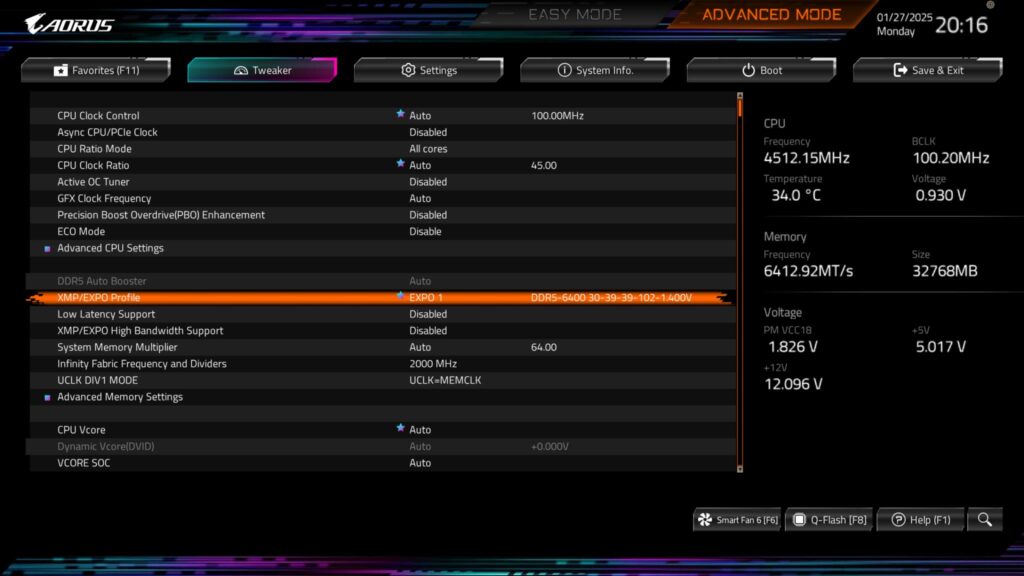
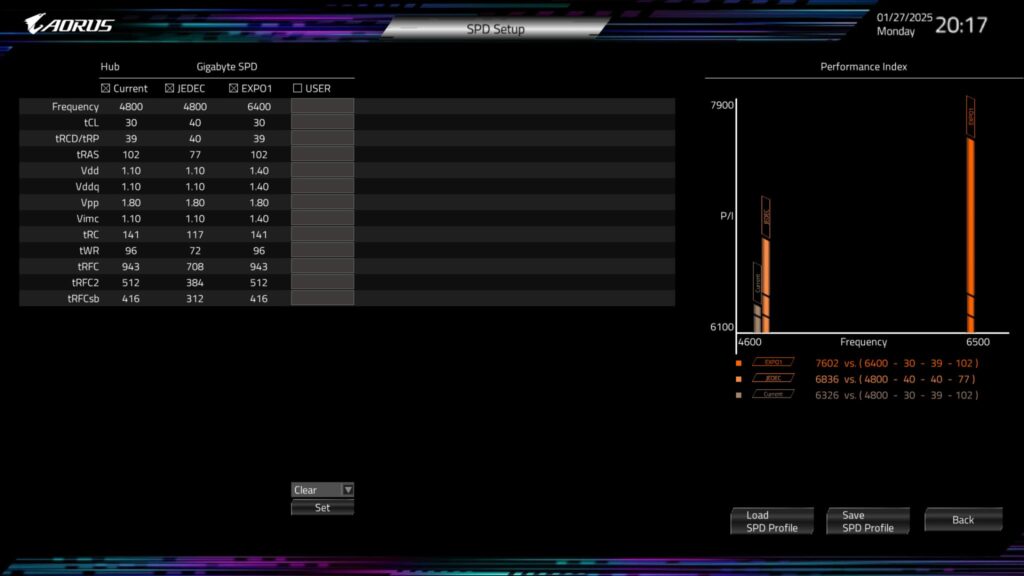
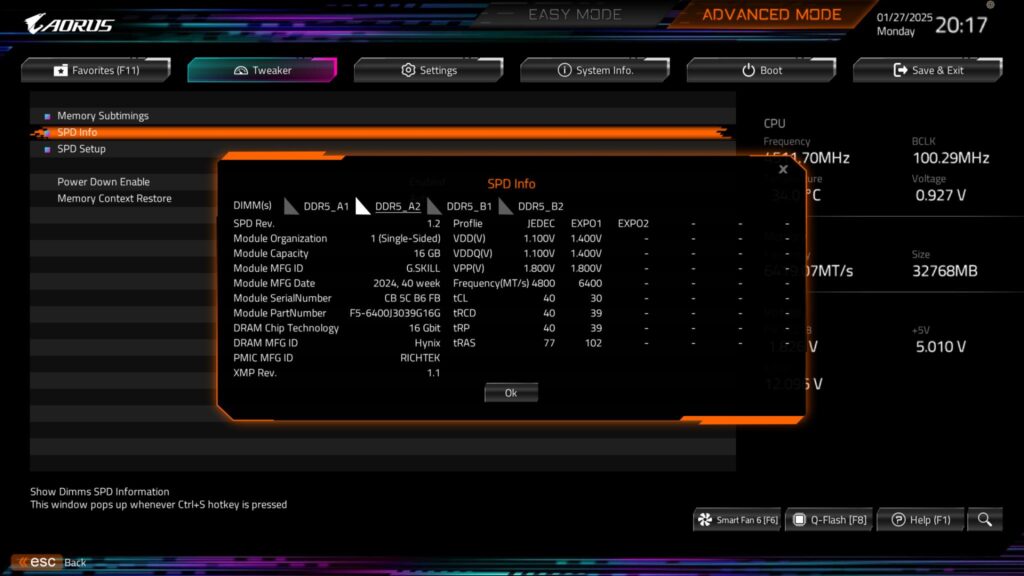
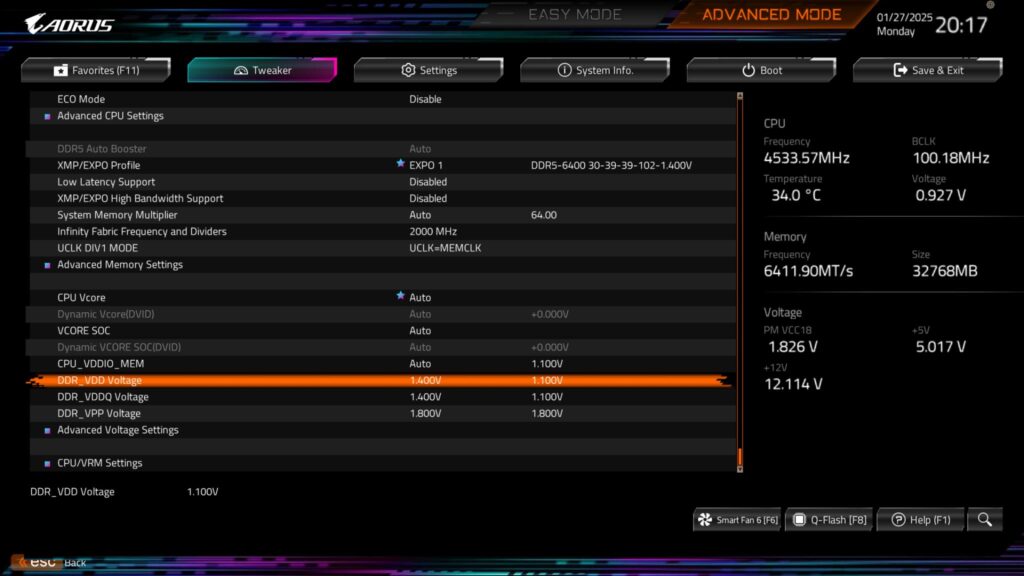
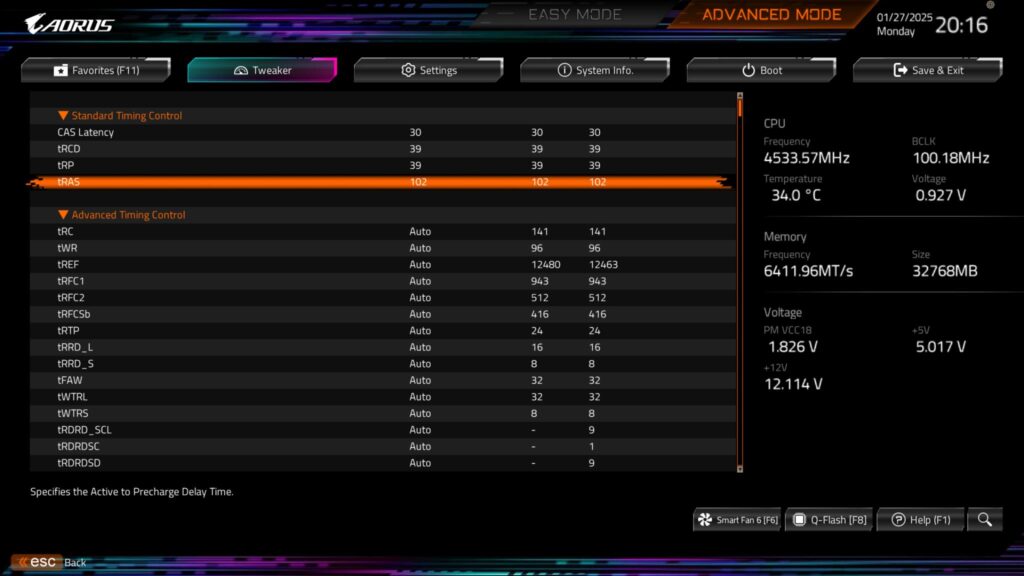
This kit has a single AMD EXPO. The kit is tested on EXPO profile enabled. This kit has 6400 30-40-40-103 at 1.40V. This kit conforms to JEDEC 4800MHz SPD operating at 40-40-40-77 timings and 1.100V voltage.
CPU-Z Readout
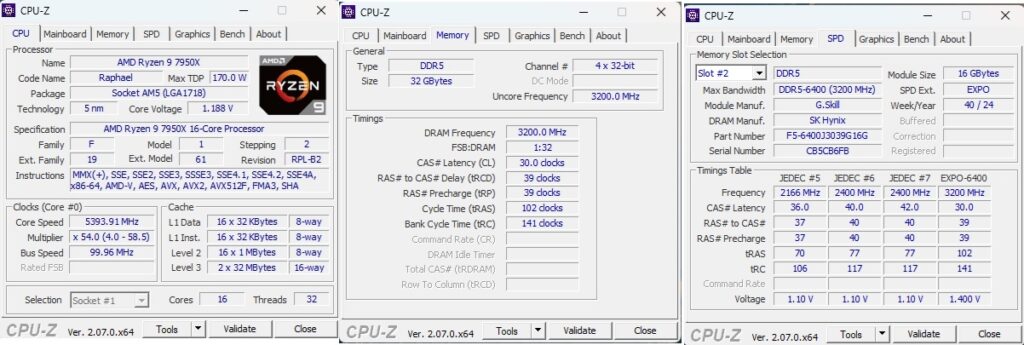
The above is a CPU-Z screenshot. It confirms that the kit is operating at 6400MHz with correct timings. The kit is in quad-channel. The reason for that is DDR5 kits have two channels (32-bit wide) per module.
Also Read: MechLands Blade75 Aluminum Mechanical Keyboard Review
Results
Let’s take a look at the result:
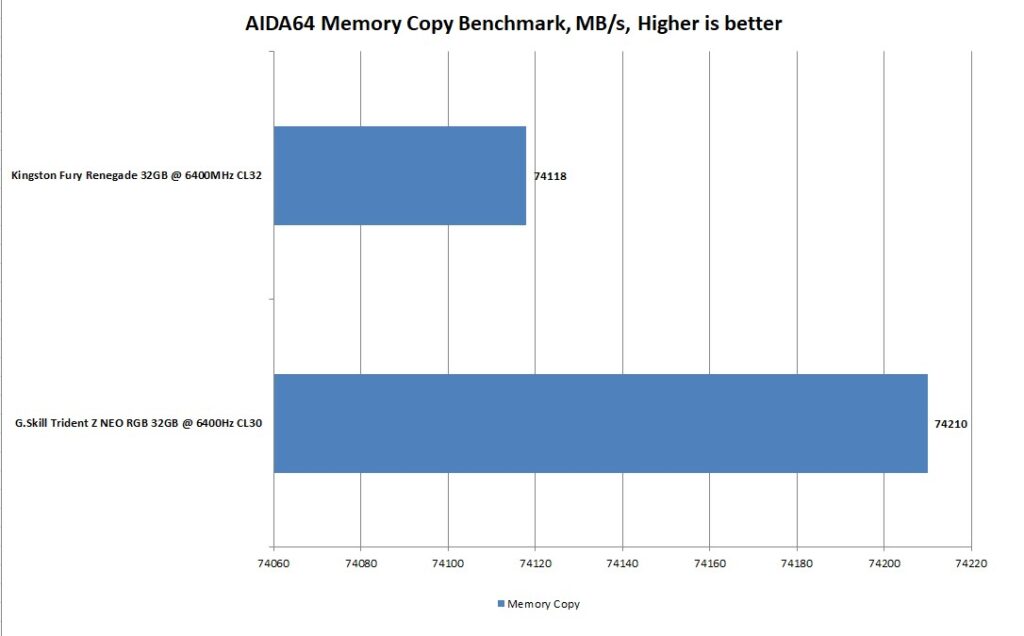
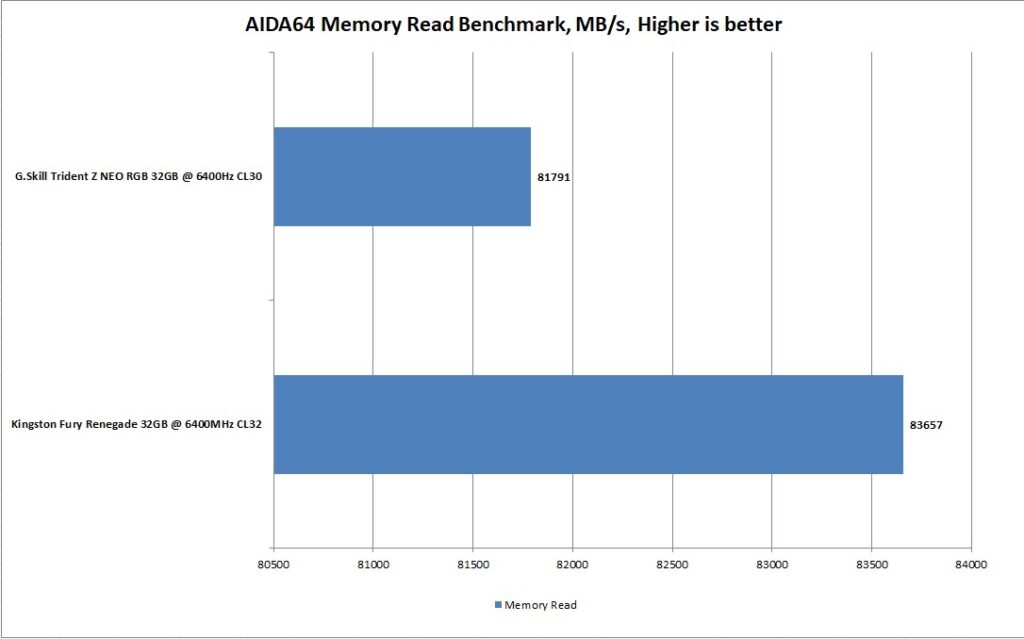
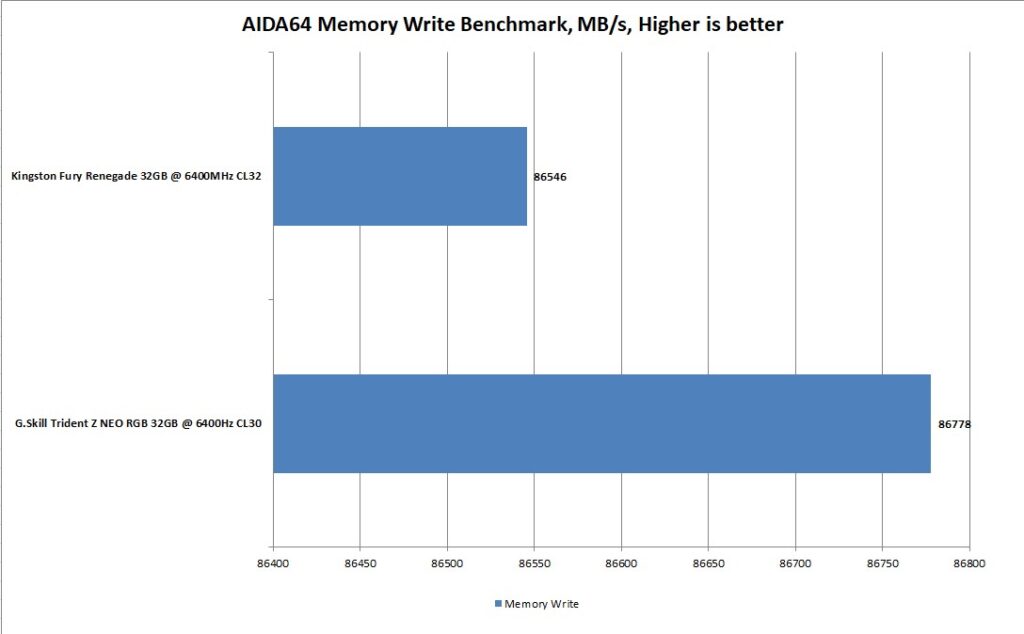
We can see that both kits operate in a close range in AIDA64 Memory Read, Write, and Copy benchmarks. This is mainly due to the same speed of 6400MHz. The result would be in the latency department.
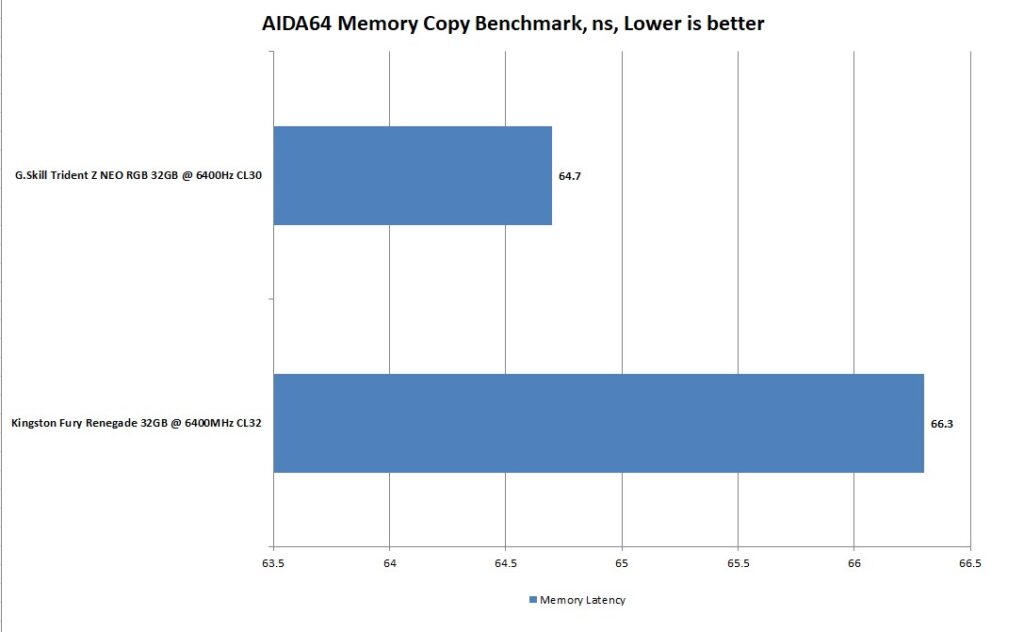
The G.Skill kit has a tight timing with CAS 30 compared to CAS 32 on the Kingston kit. This has resulted in a better latency on the G.Skill kit.
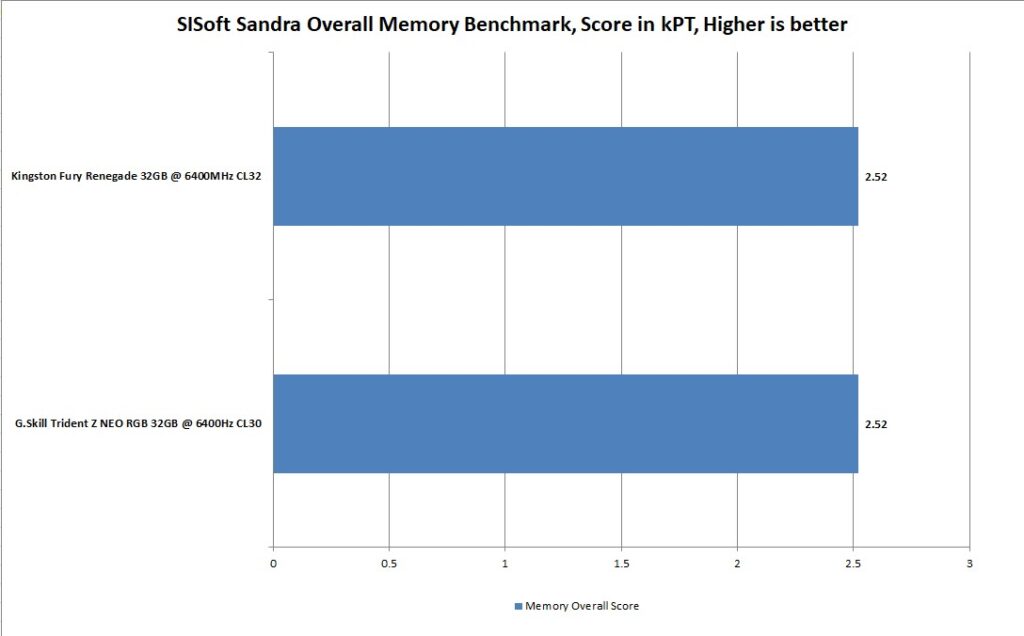
Both kits have similar scores in SiSoft Sandra Overall Memory benchmark.
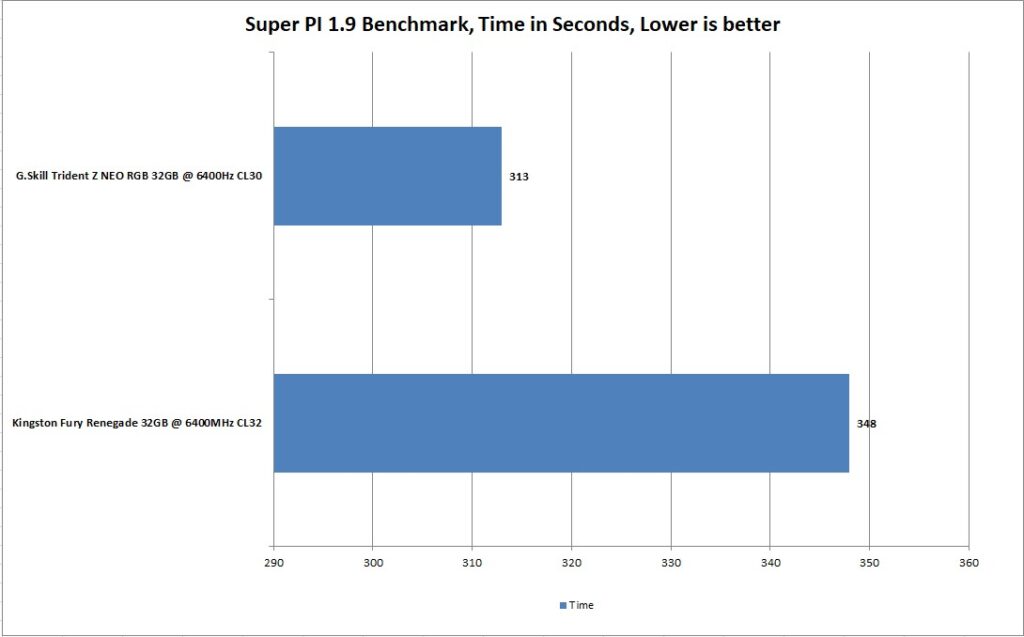
The G.Skill kit has better timing due to its low latency or tighter timings when compared to the Kingston kit we tested.
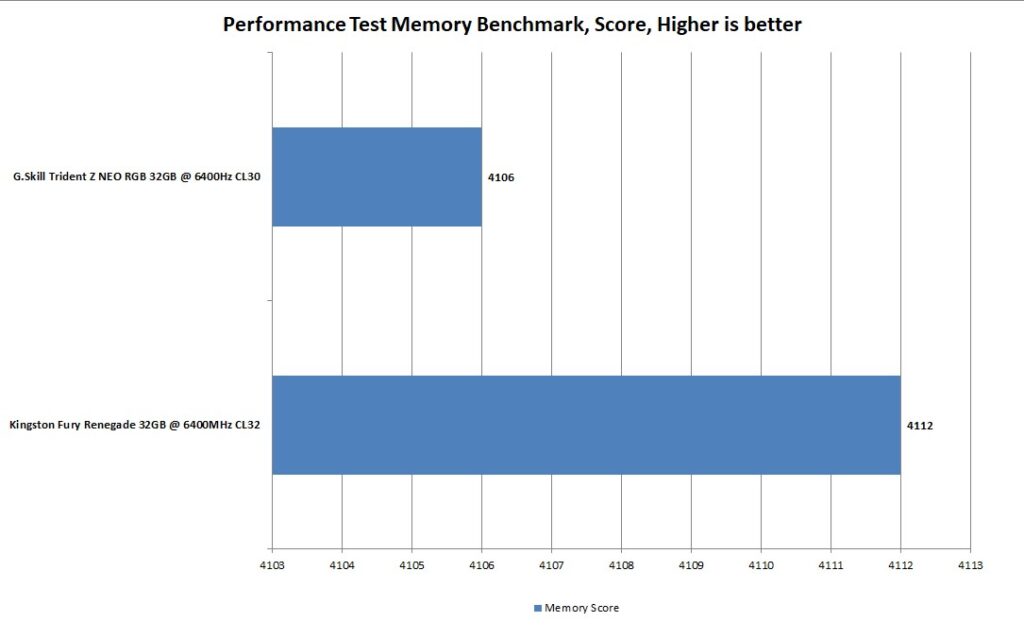
Kingston kit is 6 marks ahead of the G.Skill kit which is marginal.
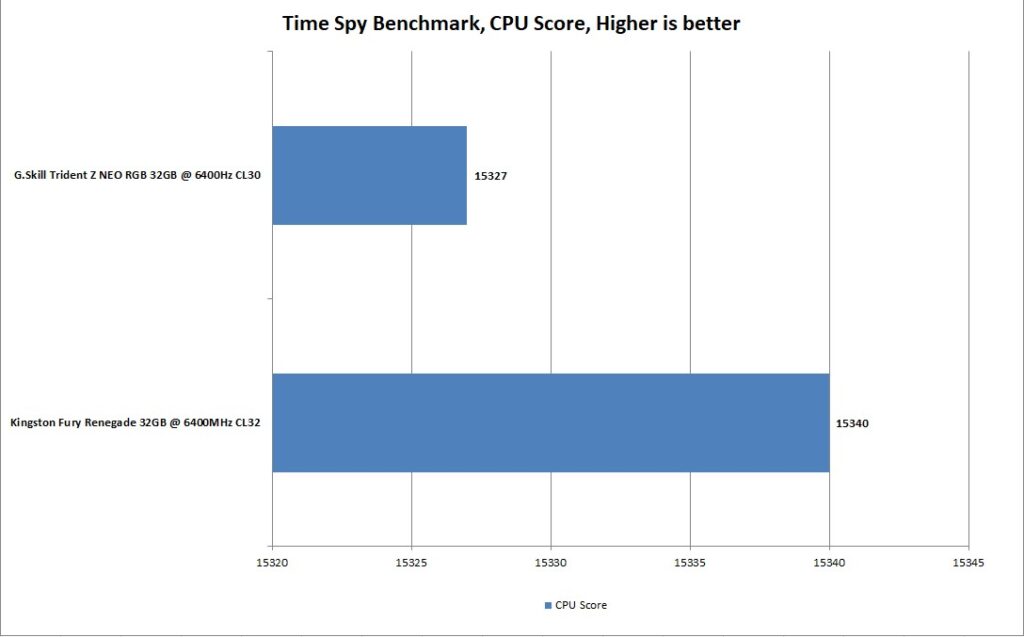
The competition between the kits is rather tight with only a small marginal difference in results.
Conclusion
I have tested the G.Skill Trident Z NEO RGB 32GB kit. The salient feature of this kit is its a-die from Sk Hynix providing a tested frequency of 6400MHz at an impressive CL30. I would love to try 6000MHz CL30 from G.Skill. This kit comes in 2x16GB capacity. The tested timing is 30-40-40-103 at 1.40V.
This kit supports the AMD EXPO profile only. The NEO series is actually targeted for the AMD platform though some kits from this series have AMD EXPO and Intel XMP 3.0 profiles support in a single solution. This kit conforms to JEDEC 4800MHz default speed using a 1.10V default voltage.
Why I am hyped about this kit? Well, is its tight binned timings which is CL30 compared to CL32 on the Kingston Fury Renegade test that is used of comparison. The Kingston kit is rated for 6400MHz so this was a good comparison and it shows how tight timings with the same frequencies can actually provide better results in time-bound tasks/loads. This kit has an overall height of 44mm which is good enough. G.Skill uses a brushed aluminum material inset on a black metallic body with CNC-milled aluminum stripes over the top for some stunning looks. The ARGB lighting effects are on the point and the diffuser runs in an offset design between the top stripes.
This kit has a limited lifetime warranty from the manufacturer and it is retailing at USD 124.99 providing a good value to the user given its tight timing for the same speed in this class. In our testing, this kit has performed equally well against the Kingston Fury Renegade DDR5 32GB @ 6400MHz CL32. It comes recommended by us.
Pros:
- 6400MHz High speed for AMD platform
- CL30 tight timing
- Stylish Aluminum Heat spreader
- 1x AMD EXPO Profile
- Competitive Performance
- Limited Life Time Warranty
- Price
Cons:
- None

Also Read: InWin AR36 AIO White Liquid Cooler Review – EnosTech.com











